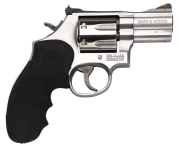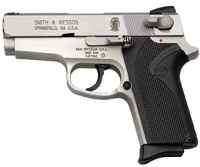A recent topic seen in the blogosphere deals with how to own and bear arms. The topic surfaced after threats were made against bloggers exercising their first amendment rights, and one blogger asking how he might act to exercise his second amendment rights. Here are my thoughts on the subject.

Why have guns? Well, first, there is the growing concern over illegal aliens and violent groups including terrorists like MS13 and Hisb’Allah. Both factions have gangs and cells throughout the country, with intent to do harm to the United States and it’s citizens. And you certainly can’t ignore the garden-variety domestic creeps among us. With these potential threats and with law enforcement spread too thin, having an in-home defense plan makes a lot of sense.
Given the premise that owning guns is a good idea, let’s discuss firearms, what to get, how to get and how to operate guns safely. First, choose a firearms dealer (one with an indoor shooting range is good). Once you select a dealer, make your purchase. In California, there is a ten-day waiting period for your initial gun purchase. You must be given a handgun safety quiz (mostly common sense answers) and briefed on the answers to questions you missed. 70 percent is a passing score. I’m not sure about other states/territories rules, but those should be similar.
To ensure safety (yours and others around you), be sure to take private or group instruction. The National Rifle Association website has links to affiliated training and instructors. For advanced learning you ought to consider taking some tactical training in home defense — seriously, you should be trained for, and prepared to use, deadly force if faced with a life-threatening encounter.
Now, let’s discuss gun selection. For most home defense, a simple shotgun will often fulfill the role. A 12 or 20 gauge model (like the Remington 870 pictured above) with number four or six shot cartridges will discourage most threats. A shotgun is easy to operate, but has a considerable recoil — smaller people should consider the 20 gauge version since the 12 gauge has a larger “kick.”
 A good entry choice for a handgun is a .357 revolver. The short-barreled Smith and Wesson model 686 is pictured to the left. The advantages of this type of gun is that it’s compact, easy to point and shoot and uses either .38 special or .357 magnum ammunition. The .38 loads produce less recoil than the .357 loads. One disadvantage is after six or seven shots, you’re done until you can manually unload brass and insert six or seven unspent rounds into the cylinder. Some of us remember the drama from western movies while John Wayne or Audie Murphy would reload their Colt revolvers.
A good entry choice for a handgun is a .357 revolver. The short-barreled Smith and Wesson model 686 is pictured to the left. The advantages of this type of gun is that it’s compact, easy to point and shoot and uses either .38 special or .357 magnum ammunition. The .38 loads produce less recoil than the .357 loads. One disadvantage is after six or seven shots, you’re done until you can manually unload brass and insert six or seven unspent rounds into the cylinder. Some of us remember the drama from western movies while John Wayne or Audie Murphy would reload their Colt revolvers.
 Often, a semi-automatic pistol is a good choice. The Smith and Wesson model 908S nine millimeter semi automatic pistol pictured at the right is a reasonable choice. Advantages of this type of gun include the ability to quickly reload the 8-round magazine with a standby magazine, compact size, light weight and easy to use. The disadvantages are that 9 millimeter loads have a greater recoil than .38 special and the magazine mechanism can become worn and will need replacing from time to time. Another possible disadvantage is the ejection of spent shells or “flying brass.” (Damsel actually considers this a positive effect!)
Often, a semi-automatic pistol is a good choice. The Smith and Wesson model 908S nine millimeter semi automatic pistol pictured at the right is a reasonable choice. Advantages of this type of gun include the ability to quickly reload the 8-round magazine with a standby magazine, compact size, light weight and easy to use. The disadvantages are that 9 millimeter loads have a greater recoil than .38 special and the magazine mechanism can become worn and will need replacing from time to time. Another possible disadvantage is the ejection of spent shells or “flying brass.” (Damsel actually considers this a positive effect!)
Acquire your guns, learn about them and shoot them often. Keep them clean and for goodness sake keep them away from where kids or strangers can get them. When you have this type of home protection, with the proper training, you may have confidence that you and your family will be secure. I place emphasis on recurrent training, regular use and proper maintenance of your protection investment.
